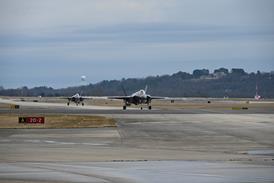Europe's regional airlines must change the way they do business or risk losing out to the ever-growing low-fare sector
If any of Europe's regional airlines still thought that they could safely ignore the onslaught of low-cost carriers, then they had a rude awakening last week at the European Regions Airline Association (ERA) conference. The evidence presented by industry experts and senior executives made it clear that change was not an option, it was an imperative.
But in truth, they were being told what they already knew: the old regional airline model is broken and it is time for sweeping changes. As the attendees mused over the rise and rise of the low-cost carriers and what the regionals were doing, or had to do, to ensure survival, the question emerged: "What is a regional airline?"
Consultant Professor Rigas Doganis proffered that Ryanair was a "regional airline" as it was serving the same markets as many of Europe's regionals. With traditional regional airlines already having to adopt much of the low-cost carrier format to remain competitive, the mountain is truly being dragged to Mohammed.
Some observers might suggest that it is the types of aircraft operated that define a regional. Where Ryanair has a 189-seat Boeing 737-800, a regional airline will be operating a turboprop or regional jet. Case closed.
Don't tell Flybe. Its entire fleet comprises turboprops and regional jets, but it has spent the last two years morphing into what it calls a "regional low-fare carrier". As if to underline its reinvention, this long-standing ERA member has just left the association and joined the newly created European Low Fares Airlines Association (ELFAA).
ERA director general Mike Ambrose, who questions the need for the ELFAA in the first place, says he suspects Flybe made the switch because it wanted to be seen as more of a low-fare airline. But is Flybe the first of many to decide that a change of image is a vital part of the survival game?
Despite the Flybe blow, the ERA is confident that it still has a strong future, having recently added two new members, and with more expected to come from the 10 new European Union members. But it is yet to wholeheartedly commit to working with ELFAA. The depth and breadth of the ERA organisation's experience arguably makes it much better equipped to tackle ongoing issues such as the passenger rights bill than the new organisation. But it is vital for both sides to work together rather than in isolation if they are to maximise their effectiveness.
If conventional regional airlines have a future, then it is as feeders into the hubs of the network carriers. But, as already been seen in the USA, they will still have to reinvent themselves. As highlighted by Lufthansa Regional's efforts, the regional airlines will have to become efficient, seat-production machines offering considerably lower costs of production than the network carriers they are feeding. If they cannot achieve this, the network carriers will replace them with their own low-cost operation.
There is only so much cost reduction that can be achieved by synergies and economies of scale. The thorny issue of staff productivity will have to be tackled with all the union hullabaloo that accompanies it. But as last week's Scandinavian Airlines union deal proves, breakthroughs are now achievable as employees accept that short-term pain for long-term survival is the only viable option.
It is no coincidence that the low-fare revolution has come hand-in-hand with the mass availability of the internet. And the low-cost carriers' already simple fare structures transferred easily to the internet.
But it wasn't so straightforward for the rest. British Airways chief executive Rod Eddington famously once said that a "second degree in physics" was needed to use the old BA booking website, adding that he actually has such a degree and still couldn't use it. Since then the airline has radically redesigned its website, and simplified its fares structure.
To compete with the low-cost carriers and attract e-enabled passengers, everyone is having to follow suit, and must keep the fare simplification effort going.
The internet accounts for 90% of Flybe's ticket sales, compared with less than 10% two years ago, generating huge cost savings. But the benefit is not only to the airline; for the first time, travellers can access all the fares from all the airlines, ensuring they get the lowest possible price.
There is little prospect of the high-earning regional airlines of yesteryear existing in the future, and there are few hiding places left. The message is simple: change, or when search and rescue arrives it will be too late.
Source: Flight International























